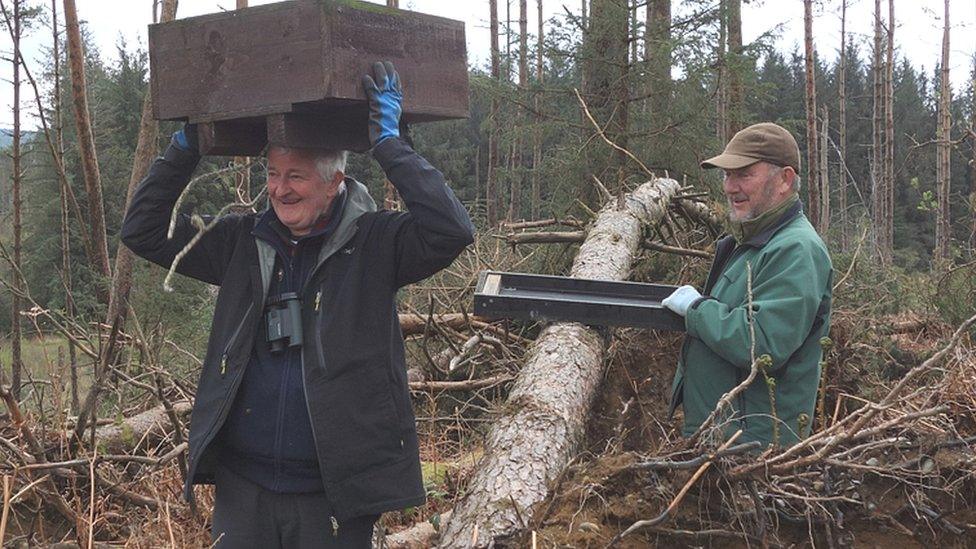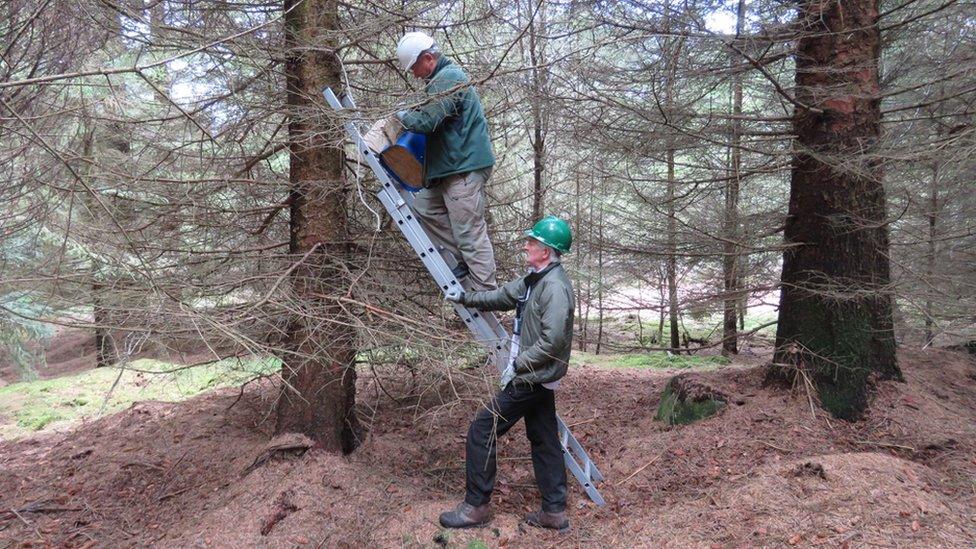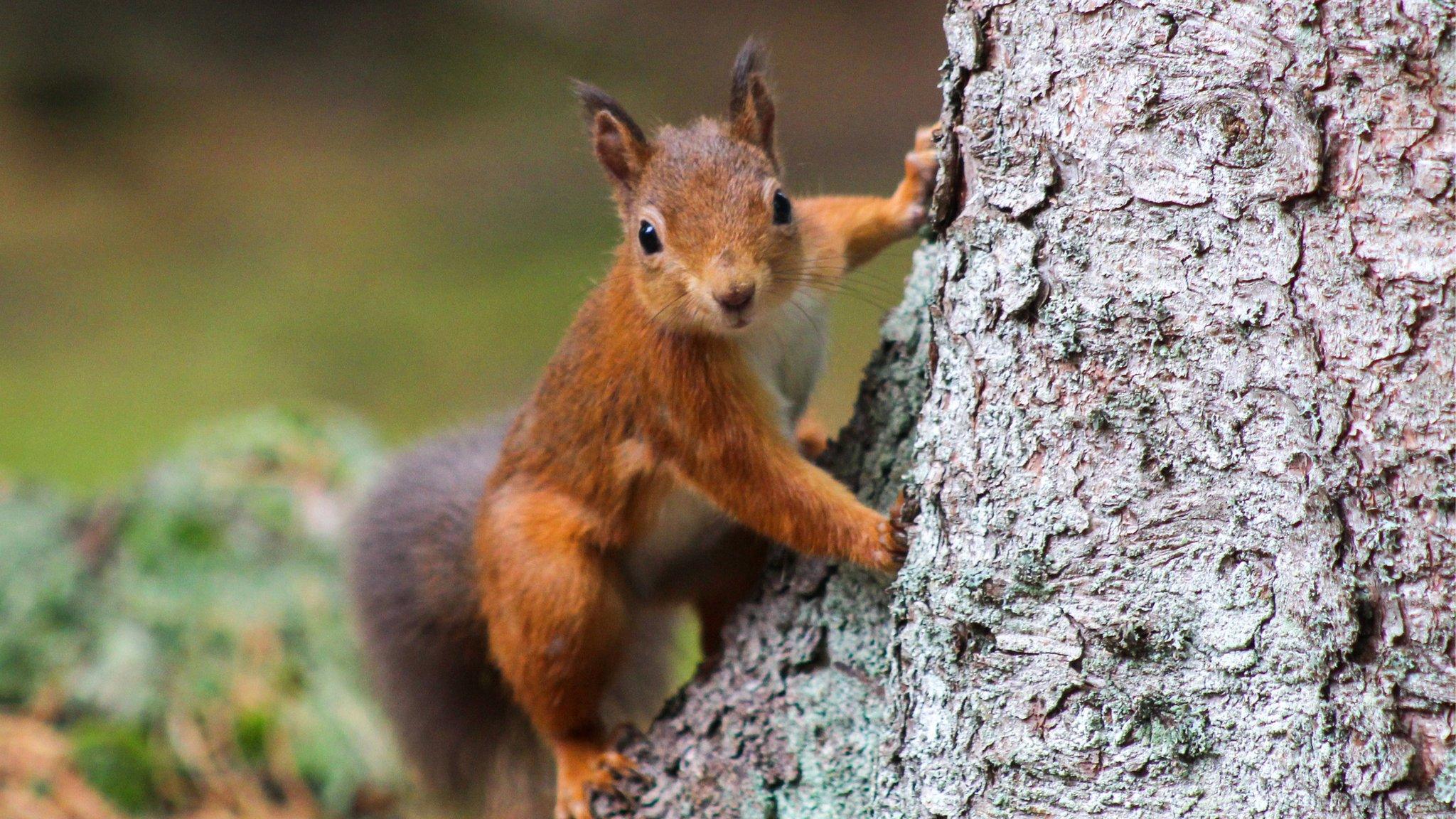Ae forest pine marten poo count shows number growth
- Published

Pine marten numbers in the two plantations appear to be on the rise
As jobs go, it is far from the most glamorous role.
Pine marten researchers Johnny Birks and John Martin are trying to establish if pine martens can thrive in productive timber forests.
Every autumn they return to the Forest of Ae and Castle O'er in Dumfries and Galloway to count poo.
The numbers of droppings - or scats - are on the rise which, in turn, shows the population of the protected species is making "encouraging" progress.

Johnny Birks and John Martin carry out regular checks on numbers in the two areas
The two plantations are managed by Forestry and Land Scotland (FLS) and produce more than 120,000 tonnes of timber each year.
However, they are also home to growing numbers of pine martens.
Research is now looking at whether the installation of artificial dens - which provide an elevated safe space to rest and breed - can boost the population further.
The ultimate aim is to show that a profitable timber industry and the pine martens can co-exist.
"Productive forests provide the UK with timber, which is vital, but they're also home to a variety of species," Mr Birks said.

Piles of pine marten poo are used to help assess if numbers are rising or falling in an area
Working with FLS, he and Mr Martin installed 50 dens in Forest of Ae in 2020 with none in Castle O'er in order to compare the results.
The method they use is to count the droppings they find - with some sent for DNA analysis for authentication.
It is a job which requires an expert eye.

"We use pine marten scats as a proxy for population establishment," explained Mr Martin.
"It's a basic survey method but it indicates population growth or decline.
"It's important you can distinguish between pine marten and fox scat - it wouldn't be obvious to a beginner but do enough of these surveys and it becomes easy to differentiate between them, with DNA confirmation as a crucial back-up."

Pine marten den boxes are being used to boost numbers in the area
The results from last year were promising.
"Both plantations showed an encouraging increase in the abundance, density and spread of likely marten scats," Mr Martin said.
"Our DNA results also showed that the species is continuing to establish in both forests.
"Forest of Ae, which has artificial dens, is still leading the way, with 50 scats compared with 15 in Castle O'er."
However, he said it was too soon to jump to conclusions about the reasons for that difference.
"Although it's tempting to attribute the greater numbers at Ae to the artificial dens, the population at O'er could be lagging simply because pine martens started establishing there a year or so later," he added.

Cameras have confirmed that the boxes are being used by the pine martens
Bill Coombes, regional environment advisor for FLS, said the organisation tried to balance the need for timber with supporting native species.
"Trees in plantations tend to be quite young, and so don't have the cavities that pine marten like to rest and breed in," he said.
"We are therefore managing our forests to retain some areas of older trees and some windblown areas, as well as some dead trees which will provide potential areas for the pine martens to use.
"These retained areas also provide suitable habitats for a range of flora and fauna as they develop."
FLS is also adding more artificial dens across the country as the pine marten is a natural predator of grey squirrels and can help to boost red squirrel numbers.
"We hope the marten populations continue to grow, and of course, people are very welcome to visit our forests to spot them for themselves," Mr Coombes added.
- Published19 January 2024
